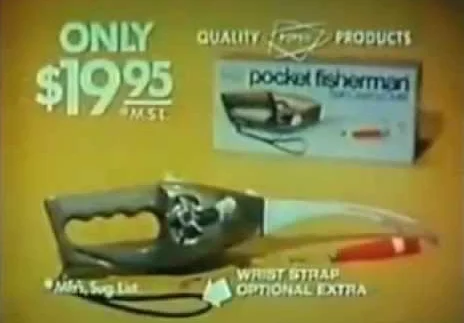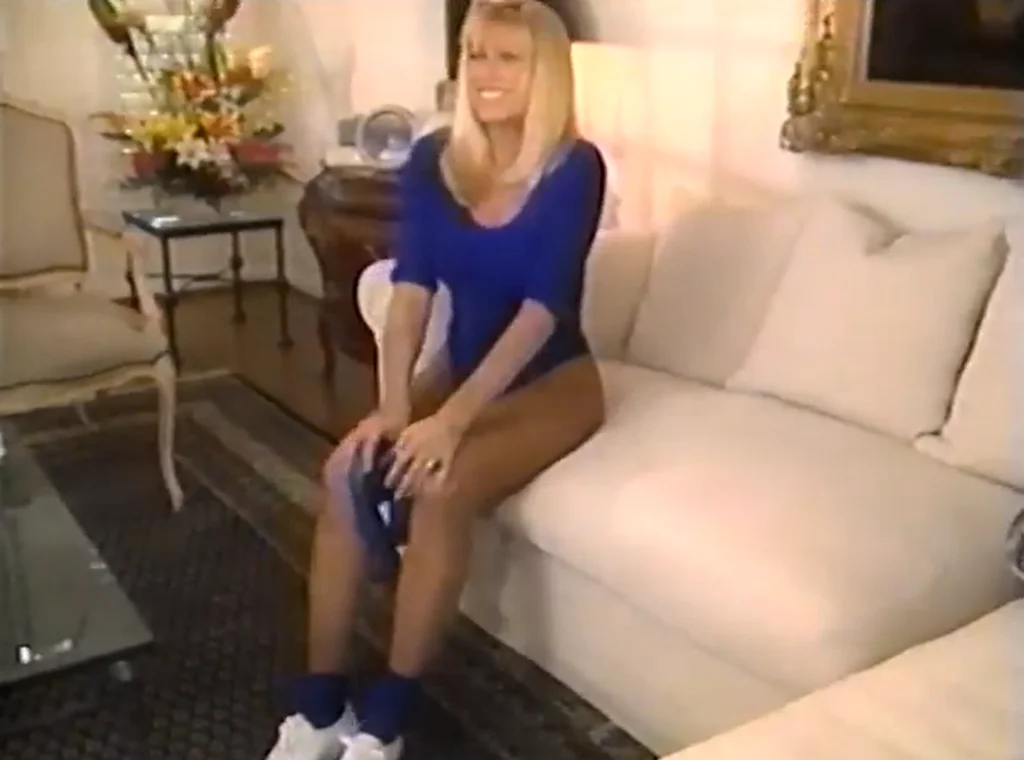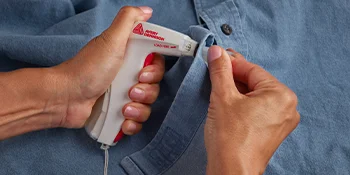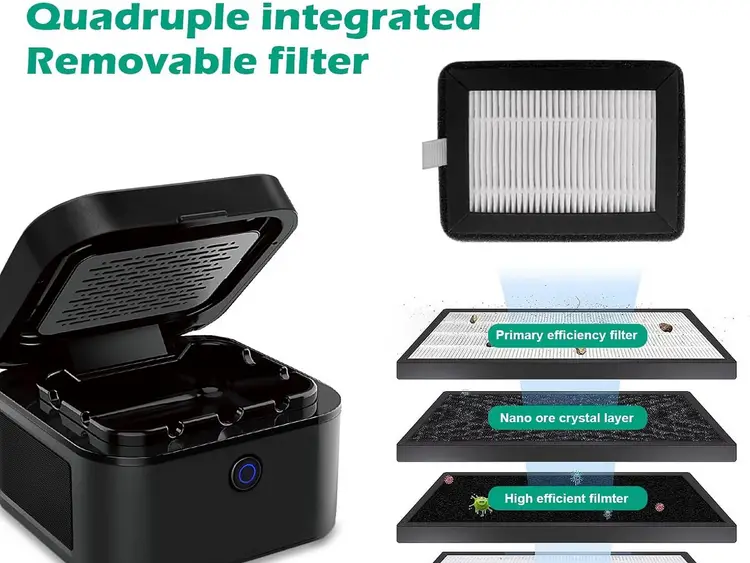Remember those late-night TV sessions when the regular programming ended and suddenly you were bombarded with enthusiastic salespeople promising miracle products that would change your life forever? The 1980s were truly the golden age of infomercials, with products so outlandish that today we’d scroll right past them, but back then, we reached for our phones and credit cards with surprising eagerness. Let’s take a nostalgic trip down memory lane to revisit some of these bizarre yet wildly successful products that captured our imaginations and emptied our wallets.
1. The Clapper

The simple sound-activated switch that let you turn appliances on and off with just a clap became one of the most iconic products of the decade. The catchy jingle “Clap on! Clap off! The Clapper!” is probably echoing in your head right now, bringing back memories of your parents or grandparents installing these devices throughout their homes. What people often forget is how temperamental these devices were, sometimes activating during thunderstorms or when the family dog barked enthusiastically at the mailman. Inventors Digest puts into perspective how revolutionary this piece of technology was at the time.
The Clapper, introduced by Joseph Enterprises in 1984, sold over 7 million units by the end of the decade despite its technical limitations. Families across America embraced this primitive home automation device, convinced it represented the cutting edge of convenience technology. The reality, of course, was far less impressive, with countless stories of people frantically clapping in dark rooms with increasing volume and frustration when the device failed to respond.
2. The Pocket Fisherman

Ronco’s Pocket Fisherman promised all the joy of a fishing trip without the hassle of lugging around bulky equipment, targeting weekend warriors who dreamed of spontaneous fishing adventures. The compact rod and reel combination that could supposedly fit in your glove compartment was the brainchild of Ron Popeil, the godfather of TV marketing himself. The commercials featured businessmen in suits suddenly stopping roadside to catch dinner, making impulse fishing seem both possible and practical in ways that defied common sense. As explained on National Museum of American History, this device was particularly linked to its presence on viewres’ televisions.
The Pocket Fisherman sold over two million units despite being vastly underpowered compared to conventional fishing gear. Its popularity stemmed not from its effectiveness but from the fantasy it sold: the idea that adventure could be compact, portable, and ready whenever inspiration struck. Countless fathers received these as Father’s Day gifts, often using them once before relegating them to the growing collection of barely-used gadgets in the garage.
3. Flowbee

The Flowbee combined a vacuum cleaner with hair clippers, promising professional haircuts at home by literally sucking your hair through cutting guards. Watching the infomercials, you’d think everyone could achieve salon-quality results by attaching this contraption to their Hoover and letting it nibble away at their locks. The demonstrations always featured surprisingly calm models who seemed completely at ease with the loud, house-cleaning appliance hovering inches from their ears. Mental Floss recounts a history of the Flowbee that’s as mind-blowing as the product blows the user’s hair.
Despite looking like something from a low-budget sci-fi movie, Flowbee sold more than two million units after its 1988 debut. Family haircut night became a strange ritual in many households, with the distinctive sound of the vacuum-clipper combo striking both fear and fascination in children across America. Parents embraced the estimated $300 annual savings on haircuts, while kids suffered the indignity of vacuum-assisted bowl cuts that would haunt their school pictures for generations to come.
4. The ThighMaster

Suzanne Somers’ ThighMaster became the fitness sensation of the ’80s, promising to tone inner thighs with a simple squeezing motion that could be done while watching TV. The butterfly-shaped resistance device captured the exercise-obsessed culture of the decade, offering a seemingly effortless path to fitness that appealed to those who wanted results without the leg warmers and aerobics classes. The commercials featured Somers demonstrating the product while wearing surprisingly formal attire, suggesting you could work out while dressed for a night on the town.
The ThighMaster generated over $100 million in sales, proving that combining celebrity endorsement with the promise of effortless fitness was a winning formula. Women (and secretly, many men) across America squeezed these purple contraptions while watching “Dynasty” and “Dallas,” convinced they were sculpting their lower bodies. The success spawned countless imitators and extensions of the brand, including the ButtMaster, as America’s obsession with fitness gadgets that required minimal effort continued to grow.
5. Chia Pet

These terra cotta figurines spread “ch-ch-ch-chia” seeds across American homes, creating green “hair” that grew before your eyes on everything from rams to turtles. The distinctive jingle and the promise of watching something grow without any real gardening skills made these quirky items irresistible gift options during the holiday season. The commercials showed lush, perfectly even growth that real-life users rarely achieved, with most home-grown Chia Pets ending up with patchy, mold-prone vegetation.
Joseph Enterprises sold millions of these clay creatures, with new designs released each year to maintain collector interest. The Chia Pet became the quintessential gag gift – something no one really needed but everyone recognized and had opinions about. The cultural impact far exceeded the product’s actual utility, with “ch-ch-ch-chia” entering the American lexicon and the pets themselves becoming nostalgic symbols of ’80s consumer culture despite being little more than novelty planters.
6. Ginsu Knives

These Japanese-sounding (but American-made) knives promised to cut through anything, from tomatoes to tin cans, without ever losing their edge. The dramatic demonstrations showed the knives slicing through shoe leather before delicately cutting paper-thin tomato slices, captivating late-night viewers with their seemingly magical properties. The high-pressure sales tactics introduced the now-famous line “But wait, there’s more!” as additional knives and accessories were added to sweeten the deal.
The Ginsu knife campaign, launched in 1978 but reaching peak popularity in the early ’80s, sold over three million sets by emphasizing exotic origins and extraordinary capabilities. The knives themselves were decent but hardly revolutionary, yet the marketing created a must-have kitchen status symbol. Countless kitchens across America featured these knives prominently displayed in their wooden blocks, ready to impress dinner guests with their supposed samurai heritage and legendary sharpness.
7. The Abdominizer

The Abdominizer promised rock-hard abs without the discomfort of traditional sit-ups, using a curved plastic sled that allegedly made abdominal exercises more effective and less strenuous. The commercials featured impossibly fit models demonstrating how this simple piece of plastic could transform your midsection in just minutes a day. The before-and-after shots conveniently glossed over the months of diet and additional exercise that accompanied any real results.
This curved piece of blue plastic sold more than three million units at $19.95 each despite having no scientific basis for its effectiveness. The Abdominizer found its way into countless homes where it briefly enjoyed a moment of enthusiastic use before being relegated to under-bed storage. Its primary function ultimately became a dust collector or impromptu sled for small children during rare southern snow days, joining the graveyard of fitness equipment purchased with good intentions.
8. Mr. Microphone

This battery-powered wireless microphone let users broadcast their voice through nearby FM radios, promising instant entertainment at parties or even as a way to meet romantic interests. The infamous commercial featured young men cruising in a convertible, using Mr. Microphone to call out to passing women with the cringe-worthy line “Hey good lookin’, we’ll be back to pick you up later!” The product promised to transform everyday people into radio DJs or entertainers with minimal effort and maximum attention.
Despite terrible sound quality and a broadcasting range of merely a few feet, the Ronco Mr. Microphone sold over 300,000 units in its first year. Family gatherings across America were subjected to amateur performances as children and attention-seeking uncles monopolized the airwaves with their questionable talents. The novelty typically wore off within hours, but not before creating embarrassing moments that family members would recall at holidays for decades to come.
9. The Buttoneer

The Buttoneer claimed to fix loose or missing buttons without needle and thread, using small plastic fasteners that could be inserted in seconds. The commercials showcased fumbling attempts at traditional sewing before revealing this “miracle” solution that could supposedly save marriages and careers with its button-attaching abilities. The demonstrations made it look effortless, though users quickly discovered that manipulating the tiny plastic T-bars was often more frustrating than simply learning basic sewing.
Priced at just $6.99, the Buttoneer sold millions of units to sewing-averse consumers who dreamed of quick fixes for common clothing problems. Homes across America added this gadget to junk drawers, where most remained in their original packaging after one or two frustrating attempts. The plastic buttons rarely matched the originals and frequently fell out after a single washing, sending many consumers back to traditional needle and thread while the Buttoneer joined other impulse purchases in forgotten corners of utility rooms.
10. The Ronco Electric Food Dehydrator

Ron Popeil promised to revolutionize home food preservation with this stackable set of trays that could turn excess garden produce into healthy snacks that would “last for months.” Late-night infomercials showed mouthwatering fruit leather, beef jerky, and dried vegetables that would supposedly save families hundreds on grocery bills while providing nutritious alternatives to store-bought snacks. The “set it and forget it” approach appealed to hobbyists and health enthusiasts alike, particularly those with gardens who hated to see produce go to waste.
The Food Dehydrator sold millions of units despite being bulky, noisy, and energy-intensive. Weekend warriors enthusiastically dried everything in sight during the first few weeks of ownership, creating questionable snacks that family members politely declined. Many dehydrators eventually made their way to garage sales or attics after owners discovered that making decent jerky required more skill than the commercials suggested and that most family members preferred fresh fruit to leathery dried versions.
11. The Smokeless Ashtray

This battery-powered device promised to eliminate cigarette smoke through a small fan that supposedly filtered the air, appealing to smokers who faced increasing social pressure about their habit. The commercials featured dinner parties where guests puffed away while the smokeless ashtray magically kept the air clear, suggesting you could have your cigarette and breathe easily too. The reality was far less impressive, with the weak fan barely moving air through the small carbon filter.
Despite its obvious limitations, the smokeless ashtray sold millions of units as smoking began its transition from social norm to social faux pas. Smokers purchased them as peace offerings to non-smoking spouses or as ways to indulge their habit without redecorating with that distinctive yellow nicotine film. Most users quickly discovered that the only truly smokeless ashtray was an unused one, but not before this gadget had found its way into millions of homes as a symbol of the changing attitudes toward smoking.
12. Sweatin’ to the Oldies

Richard Simmons’ workout videos combined nostalgic music with accessible exercise routines, featuring real people with real bodies rather than professional fitness models. The energetic Simmons, with his signature short shorts and boundless enthusiasm, created a judgment-free fitness environment that welcomed those intimidated by the perfect physiques dominating other fitness programs. The infomercials showed dramatic before-and-after transformations alongside testimonials from people who claimed the program had changed their lives.
“Sweatin’ to the Oldies” sold over 20 million copies, making it one of the most successful fitness series of all time. Living rooms across America became temporary dance studios as people of all shapes and sizes jumped, twisted, and kicked to hits from the ’50s and ’60s. The series’ success demonstrated that the infomercial format could sell more than just gadgets—it could sell experiences and lifestyles that connected with viewers on an emotional level rather than just promising quick fixes.
As we look back at these remarkable marketing successes, it’s easy to laugh at our collective gullibility, but these products reveal something endearing about the pre-internet era when television held magical sway over our purchasing decisions. These As-Seen-On-TV treasures became cultural touchstones that connected us through shared experiences—whether successful uses or spectacular failures. So the next time you’re tempted by a modern miracle product online, remember that you’re participating in a grand American tradition that has been separating us from our money for decades—just with better special effects and faster shipping.


